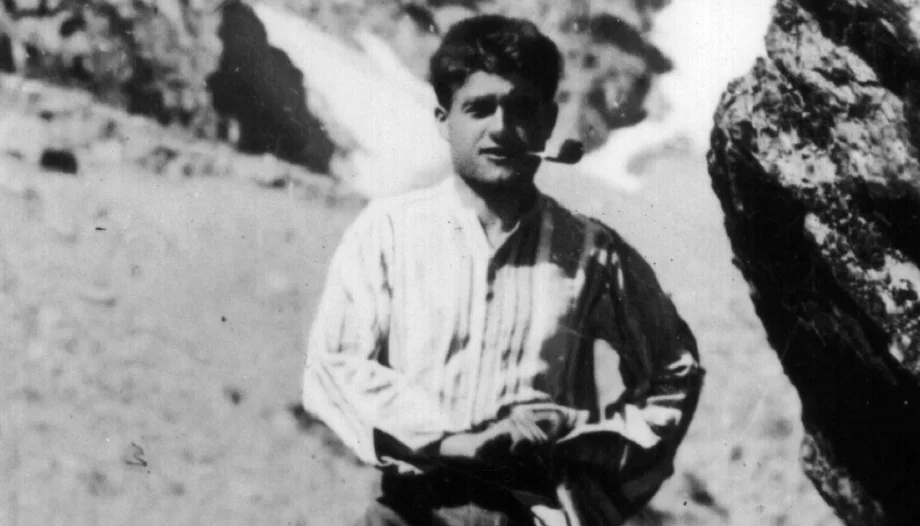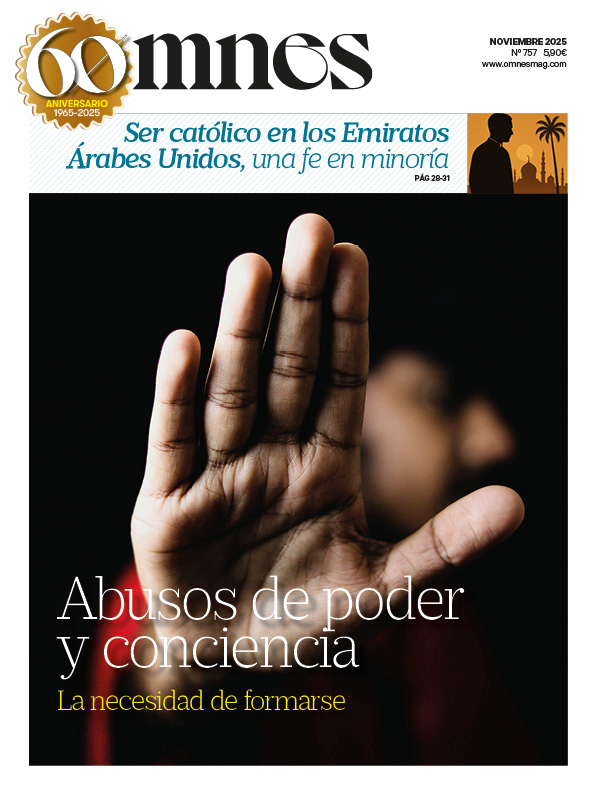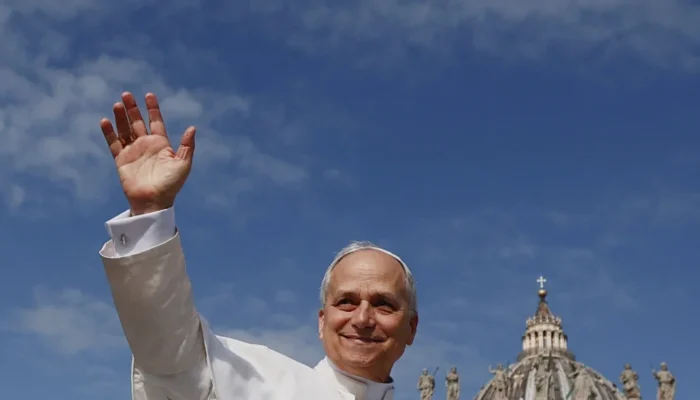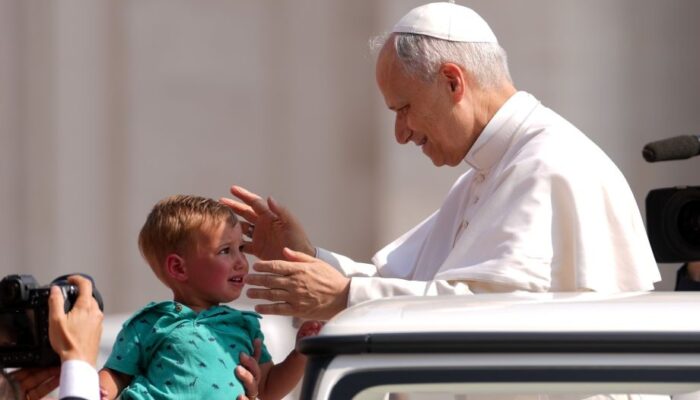Last September 7, Pope Leo canonized two young men in Rome: Carlo Acutis, 15, and Pier Giorgio Frassati, 24. In a square filled to overflowing, Leo XIV recalled the virtues of these two young men who can be an example for so many others. I will focus on recalling just one of the aspects of one of them: the love of the mountains in Fassati.
Pier Giorgio was born in 1901 into a wealthy family in Turin. He attended primary school at a Jesuit school and then engineering school. He loved sports. He often cycled the 87 kilometers that separated Turin from Pollone. He was also attracted to the sea. He savored the joy of fighting the water by swimming, rowing or sailing. He practiced horseback riding on Parsifal, a rather difficult horse. But his great passion was the mountains. It was a hobby that - like any good mountaineer - grew on him as time went by.
From a very young age he began to have a passion for the mountains. This passion grew out of his summer stays in Pollone, near Biella, in the province of Vercelli, in the Alps, where he used to hike with his family and friends. In some notes that his mother took in 1909, on returning from the Col du Teodulo, 3,317 meters above Zermatt, which in the guidebooks is listed as a ten-hour hike, we find: "We were climbing towards the White Peaks. The whole landscape was, as almost always at that hour, without shadows, without relief (...). Crossing the Teodulo with Pier Giorgio tied to me by the rope went very smoothly - the boy was often hungry - and also in this I agreed with his mother. We would stop, eat and continue. We stopped for two days at the Schwarzsee. Everyone was interested in the handsome little mountaineer." That fondness for the mountains, which was then dawning on him, he would maintain throughout his life. It was a passion that he would later justify for two reasons. Firstly, because mountaineering offered him a magnificent opportunity to exercise human virtues such as fortitude, companionship,...; and secondly, because the summits revealed to him the magnificence of the Creator.
Pier Giorgio loved sports. Even at a very young age he used to go on bicycle excursions. He often cycled the 87 kilometers from Turin to Pollone. He was also attracted to the sea, especially in his early youth. He savored the joy of fighting the water by swimming, rowing or sailing. He practiced horseback riding on Parsifal, a rather difficult horse with which he often rode to and from Turin to Pollone. But his great passion was the mountains. It was a hobby that - like any good mountaineer - grew on him as time went by.
"Every day I get more excited about the mountain," he wrote to a friend. "It is something that fascinates me. I like more and more to climb the summits, to reach the most daring peaks, to experience that pure joy that only the mountain can give. I would like to give up mountaineering, but how can I give up the fascinating appeal of the snow?".
Shortly afterwards he wrote to another: "I have left my heart on the summits and I hope to find it when I climb Mont Blanc". And even more: "If my studies would allow me, I would like to spend whole days on the mountain and admire, in such a pure atmosphere, the magnificence of the Creator".
It is understandable that he would take every opportunity to climb the Alps that were so close to him. During her university years it was customary for her to use the Christmas vacations to spend a few days in the Little St. Bernard. She would go skiing with a group of friends. They stayed in the guesthouse, using rooms where it was so cold at night that the water in the basins froze; it was one of those places where it is necessary to wrap up extra warm at bedtime.
One morning a friend and I started downhill on skis in the direction of Switzerland. The descent was beautiful, the weather unbeatable: snow in good conditions, favorable wind, signposts... And down they went, down they went. How far? They can't say for sure, but the descent was very long. When they resumed the ascent, the wind that had favored them on the way down was now a serious obstacle: gusts of sleet and whirlwinds whipped in their faces; the track had been erased, the signposts had become invisible. The friend began to pant and begged Pier Giorgio to slow down. After a long time and with considerable effort, they reached the refuge. Pier Giorgio had hardly tired; his companion, however, took a long time to recover.
After supper they had a very pleasant time together: they would sing, recall the day's events or play a game. Late at night they would retire to their rooms, which were large and could accommodate several people. Pier Giorgio would invite his companions to pray the rosary, which, in general, they all accepted, although many followed him from bed. He would pray it on his knees on the hard floor. In the morning he was the first to get up. He would call the others and remind them that the night before they had pledged to accompany him to mass. He usually helped the priest and always received communion.
Another time he went with a friend to the Adolfo Kind refuge and they stopped longer than necessary without realizing that the weather was changing. The place they had to return to was far away. They had to climb a mountain and then descend it on skis. The journey was becoming more and more difficult, especially as they were pressed for time. Suddenly Pier Giorgio realized that he had lost his watch. His companion wanted to stop to look for it, which Pier Giorgio had to oppose energetically, realizing that a delay in these circumstances could be dangerous. Around seven o'clock they reached the summit of Fraiteve. It was dark and the storm was raging. They began the descent together and carefully. At one point Pier Giorgio made a turn to stop and a ski came loose and flew off through the icy snow. Let's take a look at his partner's account:
"Frassati, at that time, was a mountaineer and a man. In my long wanderings in the Alps, I have learned to know the psychology of man at altitude, to judge him and to understand him. I am familiar with the moments of confusion that suddenly affect even the most courageous climbers at altitude, when they are overcome by an incident that can have consequences. Pier Giorgio was aware of the mishap, although I, more practical, would have tried to lessen its seriousness, in order to avoid the dejection that could have had bad consequences for his spirits. He understood this and remained serene at the time; I was perfectly convinced that I was in the presence of a type of mountain race: brave and cool in the face of danger". They descended as best they could through a heavy snowfall with the hostility of the mountain when it becomes an enemy. At last they discovered a light that was their destiny. When days later he told his mother about it, trying to play it down, he told her:
"Look, I've lost a ski. But when the snow melts we'll go look for it and we're sure to find it. I've lost my watch, too. Nothing else?" his mother asked with a wry smile. Immediately Pier Giorgio answered: "But when the snow melts... A plant will be born", his mother replied, increasing her smile. The ski appeared and today it is preserved as a memory of the man who had enjoyed so much on the snow.
But Pier Giorgio's mountaineering activity was above all climbing. He climbed at all times of the year. In the ve-ranos he had climbed many times the Col Mucrone on which there was a large cross. Winds, rain and snow had caused it to fall in the winter of 1920. When the good weather arrived, the parish priest of Pollone, at the suggestion of others in the village, decided to put up a new one, install it properly and rebuild it. Frassati joined the initiative.
During the climb, which took place at night, the priest had a serious fall which, although it did not have serious consequences, meant that he had to continue with the help of others. Pier Giorgio lent himself to help him and also helped to carry up part of what was needed to celebrate mass on the summit.
In November 1924, two companions proposed an excursion to the Bessanesse, 3,622 meters high. On their way from Bal-me to the refuge, they were surprised by the night and were unable to make their way up again. They were forced to stop in a small space, with the prospect of spending the night there. Pier Giorgio himself tells us about it:
"Our intention on leaving was to climb the summit of Bessanesse via the Zsigsmondi route. When we saw the state of the snow, it seemed imprudent and we decided to change our plans and headed for the Albarón de Saboya (3,392 meters). On the way back, the non-night was upon us and we had no choice but to improvise a bivouac at an altitude of 2,500 meters. We were lucky and found a rock, on which hung a very thick layer of snow on a slope, as a roof; we dug under it a shelter of 2.50 meters long, by 0.50 wide and no more than 0.40 high, which was very well ventilated. Once the space was prepared, we had something to eat and we had to spend the whole night devising entertainments because sleeping in those circumstances would have been dangerous".
One of the companions recalls that they prayed the rosary and, as soon as dawn broke, they prayed the Angelus to the Virgin.
His last mountain ascent was on June 7, 1925. He made it to the Lunelle peaks. He arrived at the station at the last moment, which earned him a protest from his companions. He answered them:
"What did you want, that I should miss Mass? I woke up late and could not attend with you the one we had arranged."
One of them remembers that climb, which was on the most difficult face, the Santi Plate, where a climber had fallen. "Pier Giorgio was the second in our team and he would belay me on the most difficult points. Climbing gave him real joy and he especially enjoyed some of the descents using the double rope (...) As soon as we reached the top he asked us to say a prayer for Cesarino Rovere, who had killed himself on that wall only a year before". On his return, Pier Giorgio wrote to his sister telling her about a climb and saying that he hoped to return with more material to open a new route. That one was no longer possible. Within a month, on July 4, Pier Giorgio gave his soul to God after a rapid illness that no one had been able to foresee.
For John Paul II, Frassati was a model. As Cardinal of Krakow, he recalled the figure of this young man who for a few days was unable to finish his engineering studies. "He was a model for those who climbed mountains to go climbing or skiing: he thought that he too did the same, that this was for him the path of sanctification, because in everything he discovered God. He was also aware of his responsibility in society. Responsibility for the life of the nation to which he belonged; responsibility for its authentic spiritual and Christian tradition. He faced this responsibility without sparing any effort. At the same time, his sensitivity towards the poor, the needy and the sick was striking. Undoubtedly, this is a call of particular significance and a challenge to our generation and to our time, which runs the risk of falling into insensitivity. All of us must break a lance - all of us, including myself - to discover the face of man and become aware of his situation, his sufferings and his difficulties. All this we find in Pier Giorgio.
When he was already Roman Pontiff, in one of the summers that the Pope spent a few days in the Alps, he celebrated a Mass in Cogne, in an immense green meadow called San Urso or valley of the Gran d'Eyvia (Great Water), located 30 kilometers from Aosta. He arrived by helicopter and after being welcomed by the local bishop, he moved to the altar built in wood by artisans of the region, and celebrated the Eucharist before more than 20,000 local faithful. In his homily he referred to the majesty of those mountains and said: "This enchanting place also preserves the memory of a young believer of our century, Pier Giorgio Frassati, whom I had the joy of proclaiming blessed on May 20, 1990. He used to frequent the town of Cogne. He explored with ardor the peaks that crown it; he had made of every climb to the mountains an itinerary that accompanied the ascetic and spiritual one, a school of prayer and adoration, an effort of discipline and elevation. He said to his friends: 'Every day that passes I fall more madly in love with the mountain'. And he continued: 'I desire more and more to climb mountains, to conquer the steepest peaks, to feel the pure joy that can only be experienced in the mountains'". (...) "Beloved brothers," the Pope concluded, "like St. Besso and St. Urso, Blessed Pier Giorgio knew how to combine admiration for the harmony of creation with generous service to the Lord and to his brothers. This admiration of creation, admiration of God's work, is extremely necessary. Through this admiration of creation, we admire God himself; through admiration of the visible, we admire the invisible. May Pier Giorgio, almost a contemporary of ours, be an example especially for young people, for those who come here and for those who go to the mountains to spend a period of well-deserved rest. Before such an extraordinary spectacle of nature, we spontaneously raise our hearts to heaven, as the young Frassati often used to do".
The young Frassati is not forgotten over the years. Since 1996, the Italian Alpine Club has been putting his name on a network of mountain trails throughout the country. In 2001, the year of the centenary of his birth, those of Le Marche, Veneto and Lazio were inaugurated. An association, "L'Assotiazione Internazionale Sentieri Pier Giorgio Frassati", was also created for the occasion. In this way, the figure of this young Italian is kept alive among the mountaineers of this century in which there are so many people who live their mountain experiences through hiking both on old rehabilitated paths and on others of recent creation. And now, as a saint, he will be a model for the many of us who love the mountains and go to its slopes whenever possible.
Chapter from the book "Fascinated by the summits" published with the author's permission.








